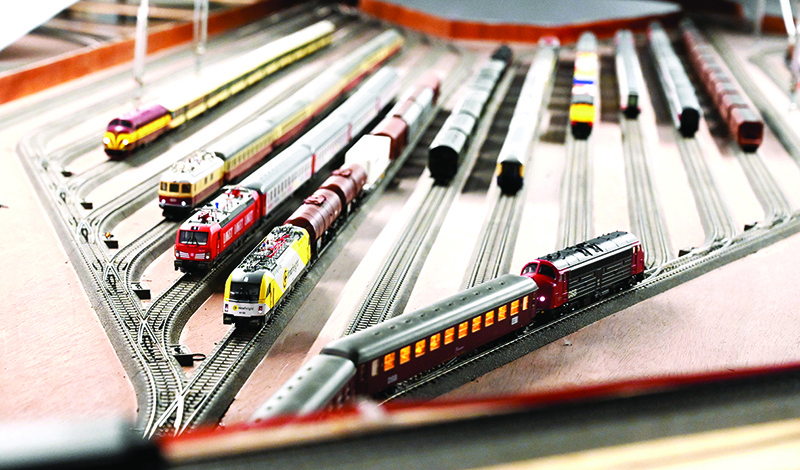
Soaring over mountain gorges, past snowy ski slopes and into bustling stations, the trains in Antun Urbic’s minuscule landscape enthrall visitors to his model rail museum in Zagreb. The Backo Mini Express Museum, the largest of its kind in southeastern Europe, boasts more than a kilometre (half a mile) of tiny tracks traversing picturesque rural villages and city squares wrought in extraordinary detail. More than 2,500 figurines including mountaineers, wedding guests, police, construction workers and commuters populate the scenes. Urbic, who opened the museum in 2015, fell in love with trains 60 years ago when his father gave him a model set. “It was the only toy that moved by itself,” said the 66-year-old who goes by the nickname Backo.
He started building sets in the attic of his Zagreb home before moving to a bigger space where he invited friends over to model with him. “It began as a hobby,” he told AFP. After spending four years piecing together a large-scale model, he opened the museum to the public.
Since then, the site has attracted 25,000 people a year, including model train enthusiasts from the United States, Australia and India. The museum reopened in May after closing for nearly three months under Croatia’s coronavirus lockdown. “We could hardly wait to come here again,” said Davorin Bozic, a regular accompanied by his three enthusiastic children. Eight-year-old Jan Zelic’s favourite detail is in a cemetery where a hand sticks out from a grave. “It’s really fun,” he said.
His father Sasa, a 38-year-old economist, praised the “precise mechanics and imagination needed to construct all this. I was particularly impressed with the ski slope.” The scene features miniature skiers zig-zagging down a slalom run inspired by the one on nearby Medvednica, which hosts the men’s and women’s World Cup. It is the only model museum in Europe with skiers actually descending a mountainside instead of being glued to the slopes, according to Urbic. Among them are two figurines of Croatian skiing stars—siblings Ivica and Janica Kostelic—now retired.
The latter is depicted skiing with only one pole as she famously did after dropping the other during a 2006 World Cup race when she won bronze. “Everyone perceives this as a children’s game but it is far from that,” said Urbic’s associate Zvonko Cebalo. “There is a concentration of knowledge—electronic, electric, IT, robotic.”—AFP

